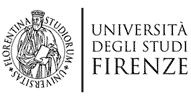Description
While FC and FN functionalities are currently designed, optimized and implemented independently each other (without exploiting the complementary), the aim of the GAUChO project is to propose a design methodology for a novel distributed and heterogeneous architecture able to integrate and jointly optimize FC and FN functionalities in the same platform. The proposed FC+FN architecture will be designed having in mind low-latency and energy-efficiency as well as security, self-adaptation, and spectrum efficiency. These properties will be achieved by means of a strict collaboration among end-devices and computing units of the integrated FC+FN platform. In addition, the development of suitable analytical methods and the definition of appropriate techniques will enable extra characteristics of the FC+FN platform including ubiquity, decentralized management, cooperation, proximity to end users, dense geographical distribution, efficient support for mobility and real-time applications.
The GAUChO integrated FC+FN based architecture can be modeled as a three-level hierarchy as shown in Fig. 1. In more detail, end-devices, which generally rely on heterogeneous sensors and actuators, build a communication network to exchange information and satisfy service/application needs. End-devices are connected to FC units (either directly or through gateways) that, in turn, may be interconnected and linked to the Cloud depending on application needs and constraints. This is where FN comes into play by providing, in an integrated approach with the FC platform, methodologies and tools to enable end-devices and FC units to carry out distributed storage and processing. The resulting processing architecture is therefore distributed and hierarchical, where datastreams acquired by end-devices are locally processed, and outcomes or pre-processed features are passed to the FC units for fulfilling the application's needs, e.g., provide control actions or raise alarms (possibly with suitable feedbacks at the end-device level). Intelligent mechanisms operating at the end-devices level of the GAUChO platform will be designed to analyze and interpret acquired data in a location-aware and energy-efficient manner as well as exploit both local and group-level intelligent processing at the communication, software and application layers to improve the performance and the QoS of the envisaged applications. The GAUChO platform allows to support low-latency and green computation and provide other distinguishing characteristics as configurability, adaptability, flexibility, energy/spectrum-efficiency and security.
To achieve these goals, this project will propose novel solutions in the following relevant research fields:
- communication and networking strategies
- computing methodologies
- intelligent/adaptation mechanisms


